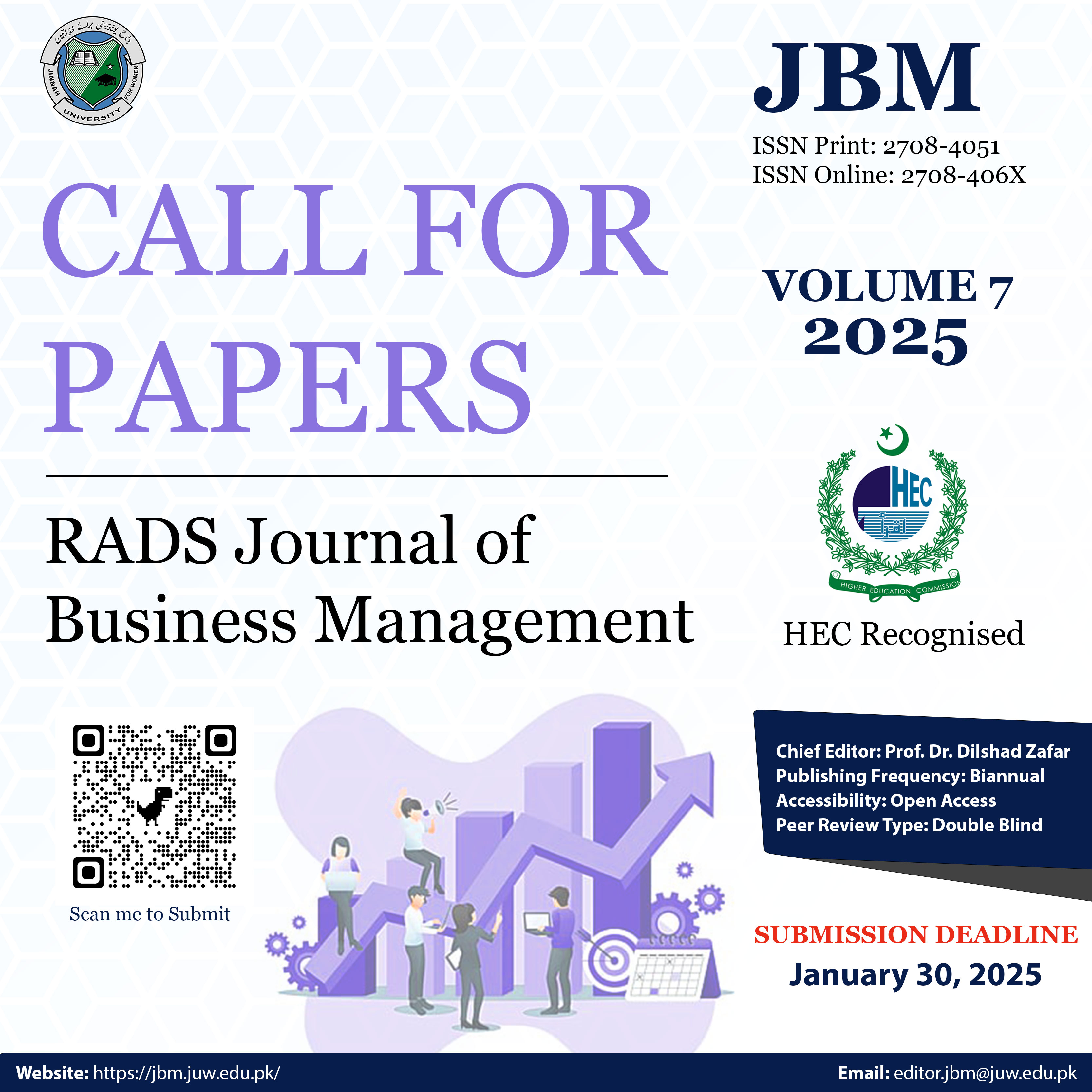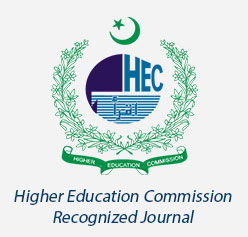Author Guidelines
Submission Checklist
- Read the Aims & Scope to gain an overview and assess if your manuscript is suitable for this journal.
- Use the Microsoft Word template to prepare your manuscript according to the Journal Guidelines.
- Read the Research and Publication Ethics guidelines and ensure that they are reflected in your manuscript.
- Make sure that issues about publication ethics, copyright, authorship, plagiarism, conflict of interest, etc. have been appropriately considered. Read the policy documents under "Policies" on the main page.
- Ensure that all authors have approved the content of the submitted manuscript.
- Download the Author Undertaking/Declaration Form, get it signed by all authors (Without this document your manuscript will not be processed).
Type of Publications:
RADS Journal of Business Management has no restrictions on the length of manuscripts, provided that the text is concise and comprehensive. The manuscripts submitted to RADS Journal of Business Management should neither have been published before nor be under consideration for publication in another journal. Duplicate submission, if detected, will be dealt with by the journal ethical committee.
The main article types are as follows:
- Original Research Articles: The journal considers all original research manuscripts provided that the work reports scientifically sound experiments and provides a substantial amount of new information. The quality and impact of the study will be considered during peer review. A manuscript must have minimum thirty (30) references within the last five (05) years at the time of submission in the reference section of studies published in impact factor research journals of academically/technologically advanced countries.
- Review Articles: The journal considers novel review articles that provide critical, constructive analysis of the literature in specific field through summary, classification, analysis, comparison in a given areas of research. A review article must have minimum eighty (80) references in which at least 85% of the references should be within the last 5 years. The other 15% can be foundational to bolster later research.
- Preprints and Conference papers: “RADS Journal of Business Management” does not accept/publish preprint and conference proceedings.
SUBMISSION PROCESS
RADS Journal of Business Management should be submitted through the online submission system. The submitting author, who is generally the corresponding author, is responsible for the manuscript during the submission and peer-review process. The submitting author must ensure that all eligible co-authors have been included in the author list and that they have all read and approved the submitted version of the manuscript.
MANUSCRIPT PREPARATION
Research Article Manuscripts should comprise:
- Front Matter: Title, Author Names List, Affiliations (Designation, Department, University), E-mails, Structured Abstract, Keywords, JEL Codes.
- Main Body: Introduction, Objective, Literature Review, Research Methodology and Design, Results, Discussion, Limitations, Conclusions, Future Direction.
- Back Matter: Acknowledgements, Author Contributions, Conflicts of Interest, References.
Front Matter:
These sections should appear in all manuscript types:
- Title: The title of your manuscript should be concise, specific and relevant. It should identify if the study is a systematic review, meta-analysis or replication study.
- Author List and Affiliations: Authors' full first and last names must be provided. The initials of any middle names can be added. The standard format is used for affiliations: Designation, Department, University and complete address information including city, state/province, country, and all email addresses. At least one author should be designated as the corresponding author, and his or her e-mail address and other details should be included at the end of the affiliation section.
- Abstract: The abstract should be a total of about 200 words maximum. The abstract should be structured with headings:
- Background: Place the question addressed in a broad context and highlight the purpose of the study.
- Methodology: Describe briefly the main methods or treatments applied. Include any relevant preregistration numbers, and species and strains of any animals used.
- Results: Summarize the article's main findings; and
- Conclusion: Indicate the main conclusions or interpretations.
- Abstract: The abstract should be an objective representation of the article: it must not contain results that are not presented and substantiated in the main text and should not exaggerate the main conclusions.
- Keywords: Four to six pertinent keywords need to be added after the abstract. We recommend that the keywords are specific to the article, yet reasonably common within the subject discipline.
- JEL Codes: The "JEL" classification system originated with the Journal of Economic Literature and is a standard method of classifying scholarly literature in the relevant research field. We recommend that the key JEL codes should be provided that cover the specific study.
Main Body:
- Introduction: The introduction should briefly place the study in a broad context and highlight why it is important. It should define the purpose of the work and its significance, including specific hypotheses being tested. The current state of the research field should be reviewed carefully and key publications cited. Please highlight controversial and diverging hypotheses when necessary.
- Objective of Study: Briefly mention the main aim of the work and highlight the main conclusions. Keep the introduction comprehensible to scientists working outside the topic of the paper.
- Literature Review: The literature review must be brief and relevant to work. This part of the study must be prepared according to instructions given in Section Type of Publications.
- Research Methodology and Design: They should be described with sufficient detail to allow others to replicate and build on published results. New methods and protocols should be described in detail while well-established methods can be briefly described and appropriately cited. Give the name and version of any software used and make clear whether computer code used is available. Include any pre-registration codes.
- Results: Provide a concise and precise description of the experimental results, their interpretation as well as the experimental conclusions that can be drawn.
- Discussion: Authors should discuss the results and how they can be interpreted from the perspective of previous studies and of the working hypotheses. The findings and their implications should be discussed in the broadest context possible and limitations of the work highlighted. Future research directions may also be mentioned. This section may be combined with Results.
- Conclusions: This section is not mandatory, but can be added to the manuscript if the discussion is unusually long or complex.
- References: References must be numbered in order of appearance in the text (including table captions and figure legends) and listed individually at the end of the manuscript. These should be typed in superscript. Minimum References: Original Article 30, Reviews 80. The References should be written in APA style through EndNote software.
Figures, Schemes, and Tables
Figures must be in a sufficiently high resolution (minimum 1000 pixels width/height, or a resolution of 300 dpi or higher).
- All Figures and Tables should be inserted into the main text close to their first citation and must be numbered following their number of appearance (Figure 1, Scheme 1, Figure 2, Scheme 2, Table 1, etc.).
- All Figures and Tables should have a short explanatory title and caption.
- All table columns should have an explanatory heading. To facilitate the copy-editing of larger tables, smaller fonts may be used, but no less than 8 pt. in size. Authors should use the Table option of Microsoft Word to create tables.
- Tables must not be sent in non-editable picture format.
Page Charges:
There is no article processing/publication fee or any hidden charges asked from the author at the time of submission or after the publication of the manuscript.




